Rodents
(Click on the name to keep from scrolling)
If you have any questions or concerns or would like to schedule an appointment call us or send us an email
Call Us Today! 952-404-BOGO (2646)
Share This Page!
Eastern Meadow Vole

Appearance
These voles are commonly mistaken for mice. Their small ears and tail are great ways to tell them apart. The tails are around 1-2.5 inches in length. They also have rounder/stockier bodies compared to mice. Most have brown fur on top and turn yellowish-gray on the sides. The fur can get darker depending on the climate they live in.
Length (without tail): 4-6 inches
Weight: 33-65 grams
Lifespan: 1-1.5 years

Habitat/Behavior
They are the most common vole in all of North America. They prefer to live in long grasses near bodies of water as they are excellent swimmers. They can be found living in marshes, meadows, grassy woodlands, and prairies. They are active during the day, unlike mice who are nocturnal. They also don’t hibernate and feed on fresh grass, herbs, and seeds. In the winter their diet shifts to the bark and roots of trees.
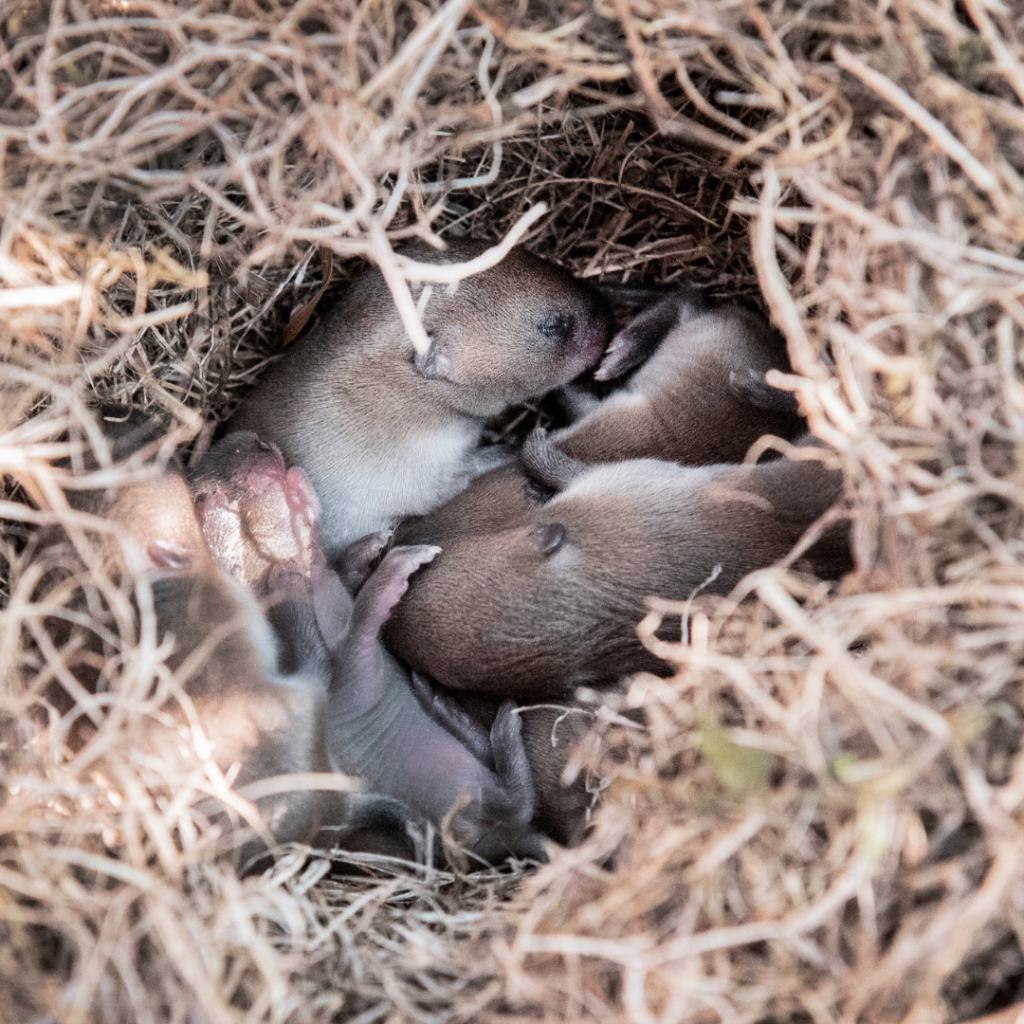
Reproduction
Similar to mice meadow voles breed all year round. They’re most actively breeding between March and November. They build their nests below the ground where the pups stay with the mom for 14 days. After one month the voles are sexually mature and able to breed.
Pregnancy duration: 20 days
Baby carrying: Avg. 4-5 pups (capable of 1-11)
Number of litters (per year): 1-5
Prairie Vole
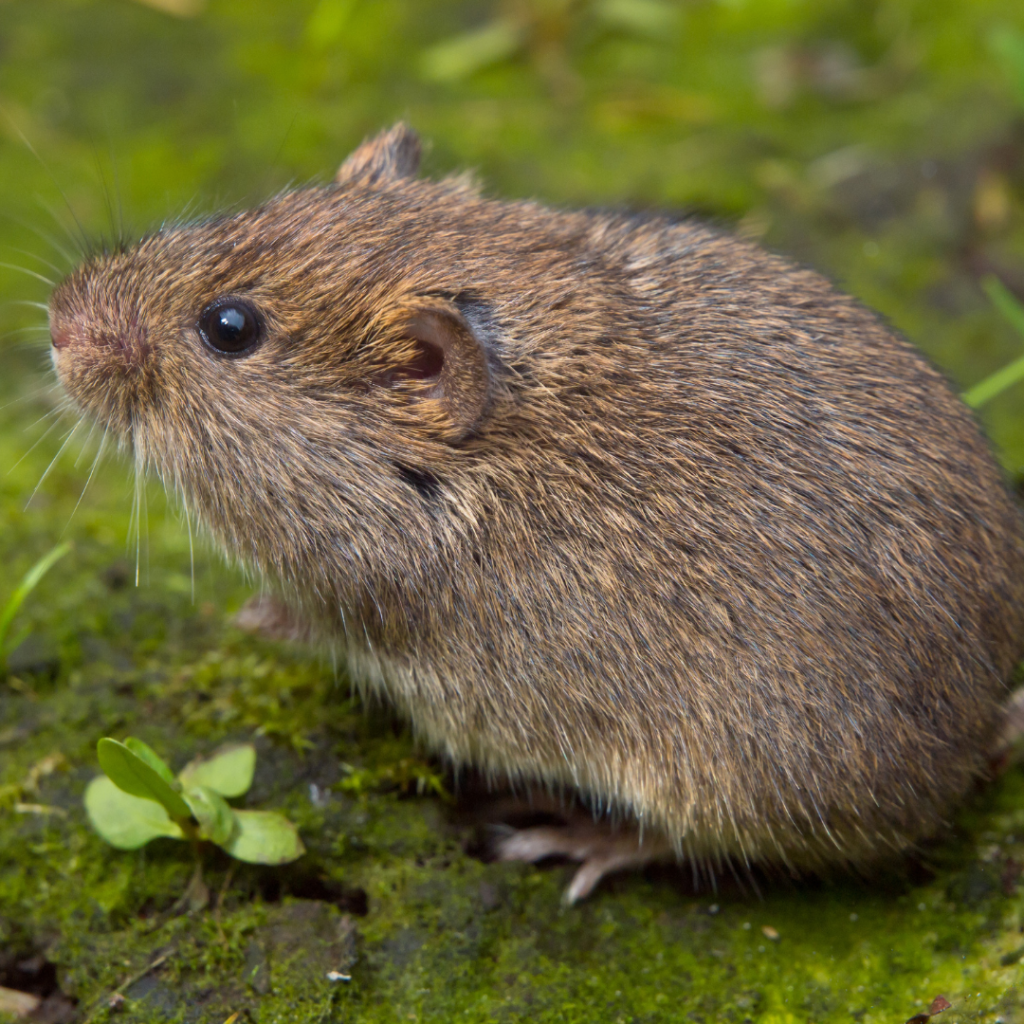
Appearance
Some key differences between the prairie and meadow voles are the prairie voles ears, size, and tail. They are slightly smaller in size than the meadow vole. Their ears are more visible and their tail is shorter (1-1.3 inches). As for the fur, it’s a gray-brown color and they have a yellowish-orange underside.
Length (without tail): 4-5 inches
Weight: 55-60 grams
Lifespan: 1 year

Habitat/Behavior
As the name suggests these voles are commonly found living in prairies. They can also be spotted in un-grazed pastures, meadows, alfalfa, and soybean fields. They are unique in that they can be found living as mated pairs, solitary as a single female, or in social groups. They are usually found in groups during the winter months to help keep each other warm. Most of the time is spent underground where they are safe from predators. These voles are also herbivores like the meadow vole.
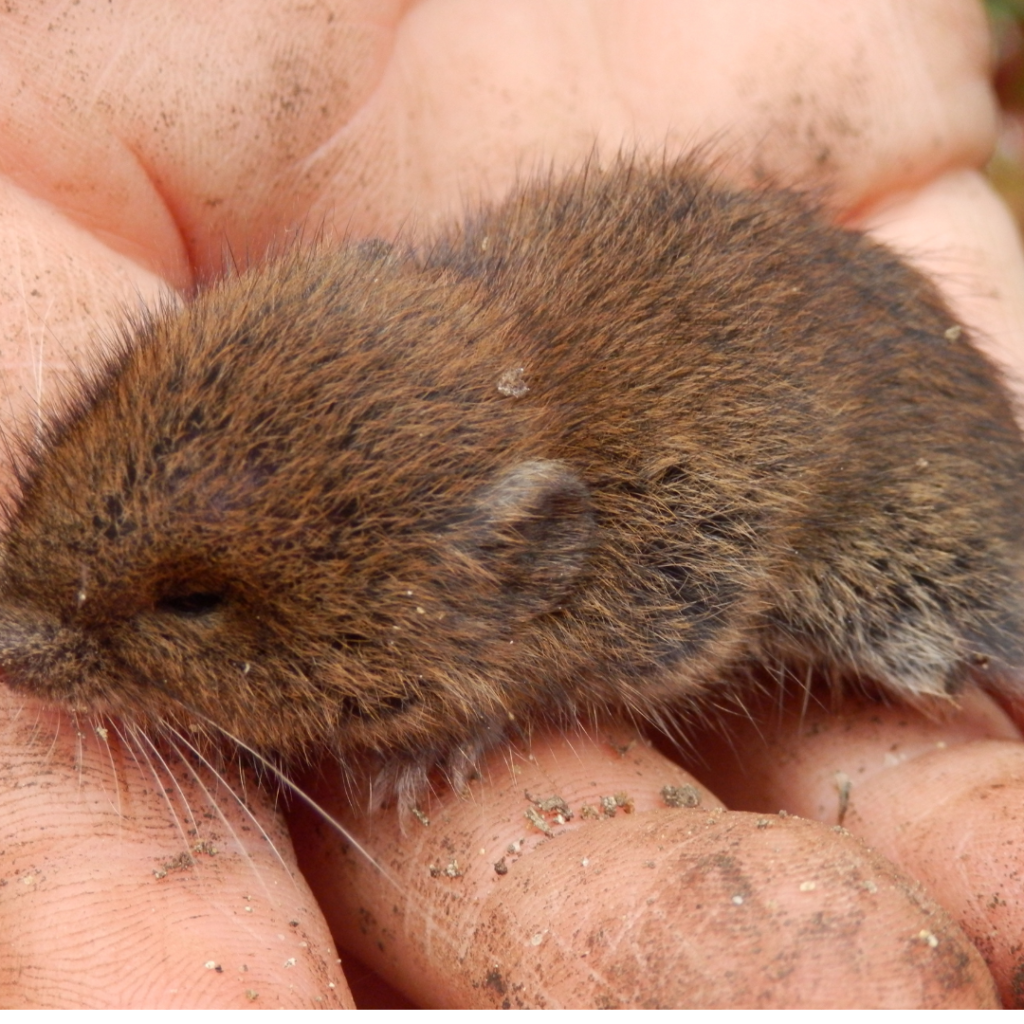
Reproduction
Their mating practices change with the seasons, social structure, and diet. Some males and females will pair with each other while others mate with multiple individuals. This usually happens inside large family groups where multiple voles all live together. Their highest rate of breeding occurs between May and October. When born the pups start to leave the nest after 2-3 weeks. These voles become sexually mature after 30 to 45 days.
Pregnancy duration: 21 days
Baby carrying: 3-4 pups
Number of litters (per year): 1-5
Southern Red-Backed Vole
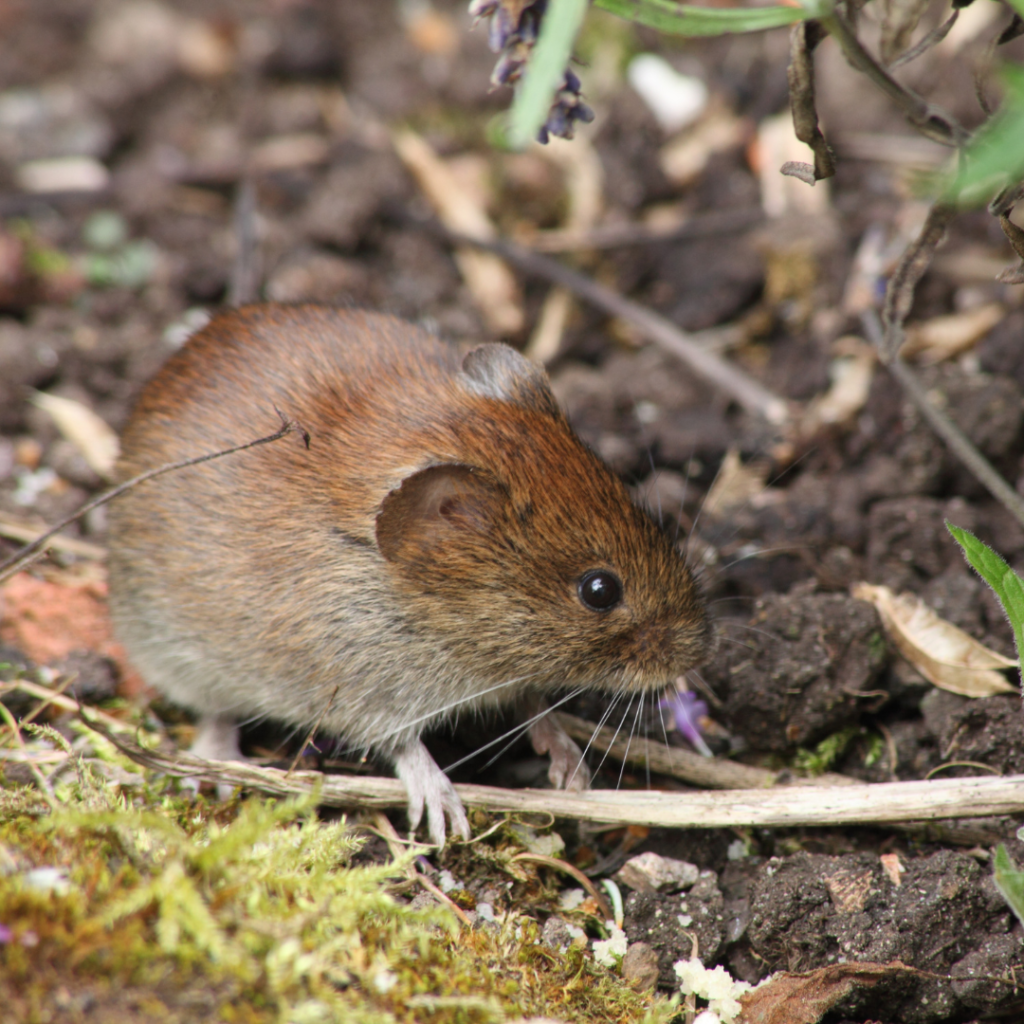
Appearance
They get their name from the very visible reddish-brown stripe running along their back. The sides and face of the vole are a brighter yellowish brown. The belly is much brighter ranging from a gray to almost white tint. Their tails range from 1-2.4 inches in length.
Length (without tail): 2.5-4.4 inches
Weight: 6-42 grams
Lifespan: 1-1.5 years

Habitat/Behavior
These voles are most commonly seen inside coniferous forests but are also seen in mixed coniferous/deciduous forests. Since they live in forests they are excellent climbers and jumpers. Like all voles, they are also active all day and night and all year round. They are also known to be territorial and solitary animals. They will fight off other voles and other species that are getting too close to their nest.
Habitat Range Map
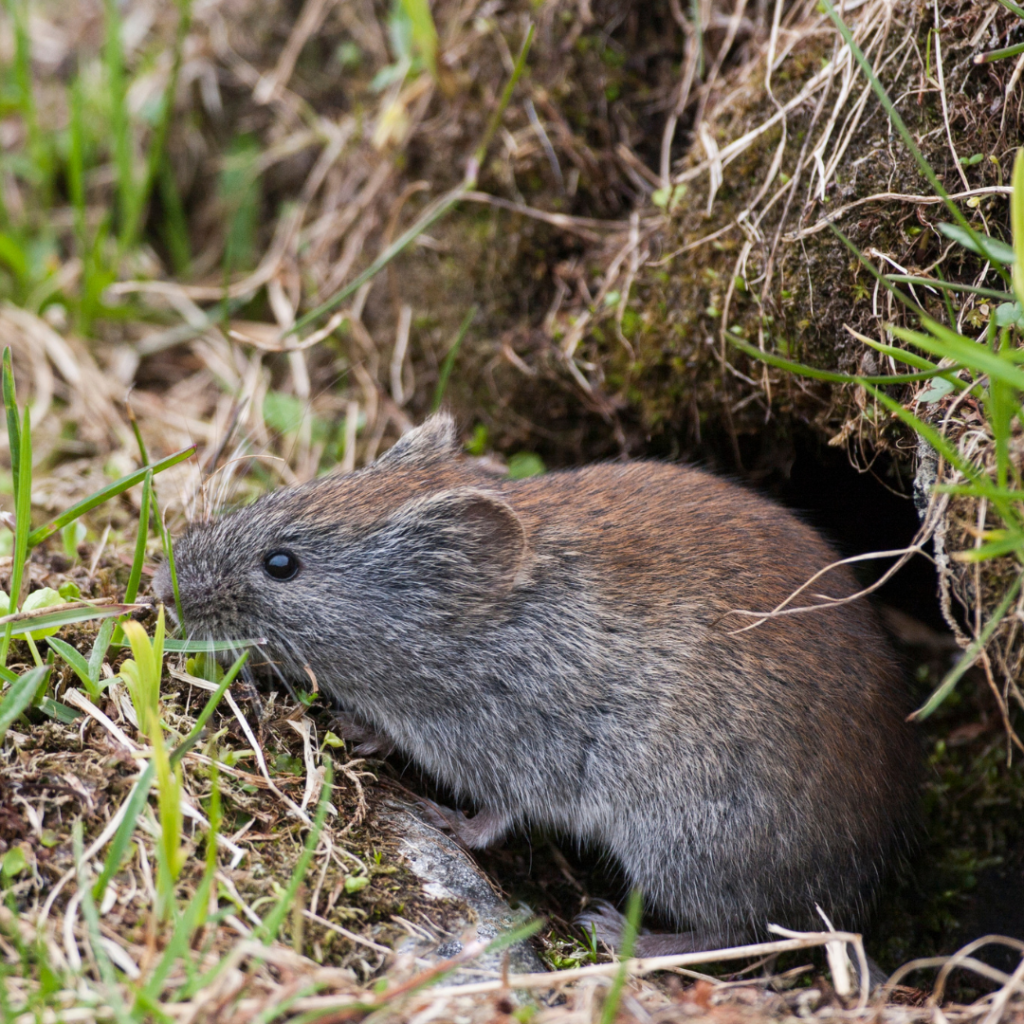
Reproduction
They build nests under the roots of trees and stumps, logs or piles of brush. They also have been recorded living high up off of the ground on branches or inside holes of trees. The pups are weaned at around 17 to 21 days and become sexually mature after 3 months.
Pregnancy duration: 17-19 days
Baby carrying: 3-7 pups
Number of litters (per year): 2-3
Southern Bog Lemming

Appearance
They have a similar appearance to a small guinea pig. They have thick fur that can vary between brown, reddish, and dark brown and, their underbelly fur is a silver gray. Their ears are small and hidden behind their fur. Unlike guinea pigs, they have a tail about 0.75-1.0 inches long.
Length (without tail): 4-6 inches
Weight: 20-50 grams
Lifespan: 1-2.5 years

Habitat/Behavior
They are similar to voles in that they do not hibernate and aren’t nocturnal. They are most active in the afternoon and at night. They often share their habitat with voles. They are both found in similar ecosystems such as forests, wetlands, grasslands, and bogs. Unlike most voles though, they are very social animals. They are known to live in colonies of 20-30 individuals. Their diet consists of primarily vegetation such as plant leaves, stems, roots, seeds, and grass. They also sometimes eat berries and other fruits when they are in season. One way to tell if a lemming is near or inside the home is to look at their droppings. Because of all the greenery that they eat their droppings are a uniform light green color.
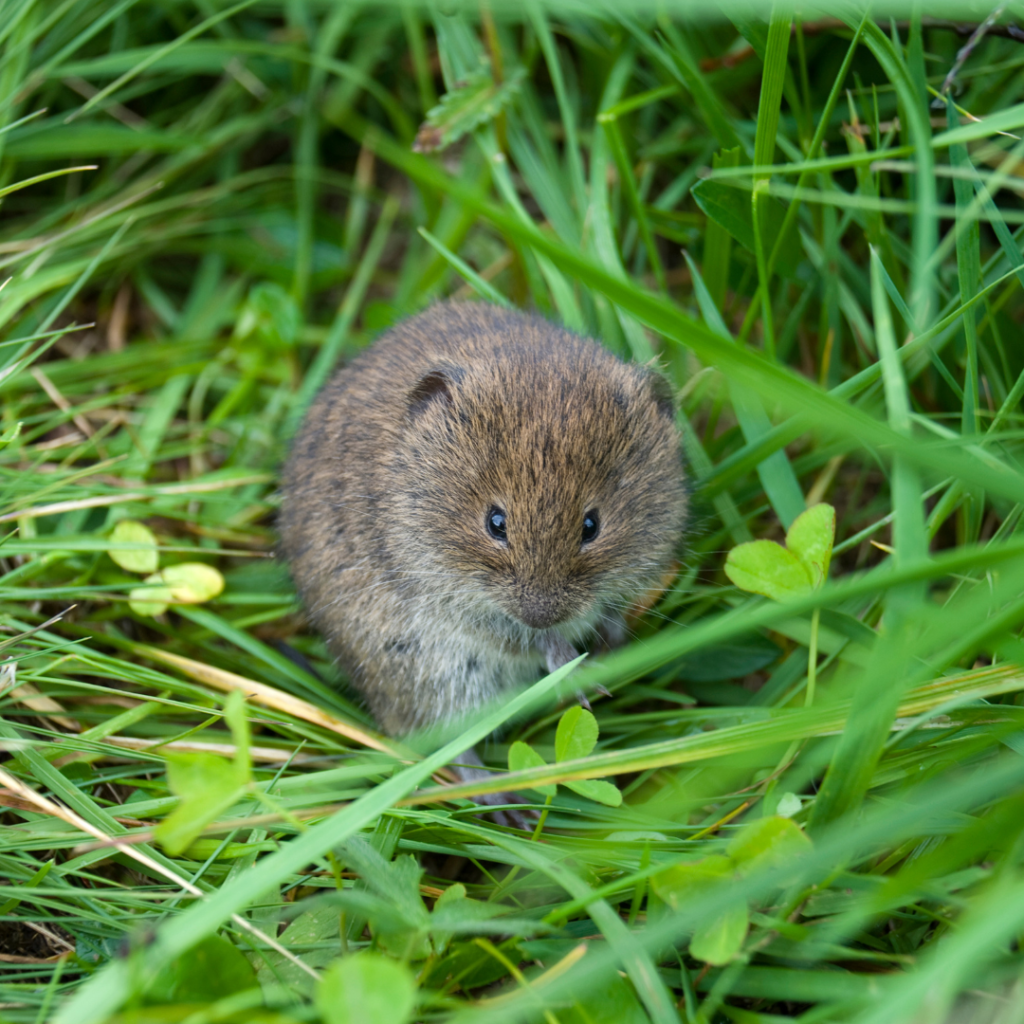
Reproduction
Similar to mice and voles lemmings also breed all year long. They build nests inside their burrows which are usually found beneath root systems of trees, or moss. Most of their young are usually born between April and September. When the babies are born it takes around 3 weeks for them to leave the nest and they become sexually mature in 5 weeks.
Pregnancy duration: 23-26 days
Baby carrying: 1-8 young
Number of litters (per year): 2-3
Eastern Gray Squirrel

Appearance
The fur on them can vary between black and grey. While they always have white fur on the underside. Depending on the season the fur may change color to an orange-brown during the summer and the tail may become whiter. The tail is used as a balancing mechanism to help keep their balance as they jump between branches. The tail measures between 7.5-10 inches.
Length (without tail): 9.1-12 inches
Weight: 400-600 grams (0.8-1.3 lbs.)
Lifespan: Avg. 1-2 years (can live up to 12 years)

Habitat/Behavior
Squirrels play an essential role in our ecosystem by burying seeds that they keep in caches to save for winter. But sometimes they forget where they placed them turning them into gardeners of the forest. Just one squirrel will make thousands of caches each season. They commonly inhabit forests containing oaks and hickories due to the fact they produce the most seeds for them to eat. They are mostly active during the day and do not hibernate in the winter. They also are very intelligent when it comes to communicating with one another. They use many different vocalizations and body posturing. A lot of this is still being learned and studied as it is still unknown the meaning behind it all.

Reproduction
Gray squirrels breed twice a year. Once in the fall and once in the spring. During the breeding season, one female squirrel may attract close to 100 different male squirrels to her nest. Most people who see the squirrels chasing one another believe they are just playing but the males are either fighting for the female or chasing the female to mate with her. They build their nests high up inside forks of trees and the female and male squirrels will share the nest during mating season. They also have been known to make nests inside attics of homes or inside buildings. They usually move into these areas in the fall to keep warm during the winter. Once the babies are born it takes about 10 weeks for them to leave the nest and be on their own. I then take 5.5 months for them to be sexually active, but most females start breeding at 1.25 years of age
Pregnancy Duration: 40-44 days
Baby carrying: 2-3 pups
Number of litters (per year): 1-2
American Red Squirrel

Appearance
This squirrel is one the smallest of all the tree squirrels that live here in Minnesota. Like the gray squirrel, its fur can also change color depending on the season. In the summer a black strip becomes visible going along the side of their bodies. But in most cases, the squirrel’s fur is either brown or reddish-brown with creamy or white colored fur on the underside. Their tails are not as fluffy as their counterparts but still serve the purpose to help with balancing and climbing. The tail is 4-5 inches long.
Length (without tail): 11-13 inches
Weight: 197-282 grams (0.4-0.6 lbs.)
Lifespan: Avg. 3-5 years (can live up to 10 years)

Habitat/Behavior
The squirrels are active all day but mostly during the mornings and afternoons. They also do not hibernate but will stay sheltered for a few days during extremely cold days. Similar to the gray squirrel these squirrels also store seeds and nuts in the ground before winter giving them an important role in spreading and planting seeds in the forests. They live in all different kinds of forests both deciduous and coniferous. Like other squirrels, they also have to chew on wood to file their teeth down because without doing so their teeth will continue to grow into their skulls and jaws. Red squirrels are mostly solitary animals when they are not breeding and can be territorial in protecting their nests and food. They have a very distinct chattering or screeching sound to warn off predators or other squirrels away.

Reproduction
Females will mate with multiple males during the mating season. The females will sometimes mate twice a year. Once in late winter and then again in the fall between August-September. During each season the female squirrels will only mate for one day but with multiple males. They nest inside trees or build them on branches from twigs, leaves, moss, and bark. Sometimes they even make their way inside attics of homes but this usually occurs in the fall or winter. Their litters are larger than the gray squirrel resulting in many homeowners panicking when hearing all the chatter and activity inside their homes. The babies stay in the nest for 12 weeks and become sexually mature after one year.
Pregnancy duration: 33-35 days
Baby carrying: Avg. 2-5 pups (capable of 1-8)
Number of litters (per year): 1-2
Eastern Chipmunk

Appearance
The eastern chipmunk is a very common rodent to see in Minnesota. They have a total of 5 dark strips going along their back with lighter stripes alternating in between. Their tails are shorter than a squirrel at 3-4 inches in length. They have unique stretchy skin in their cheeks that allow them to store large amounts of seeds and nuts inside them so they can carry them back to their nest or burrow.
Length (without tail): 5-6 inches
Weight: 66-150 grams
Lifespan: 2-8 years
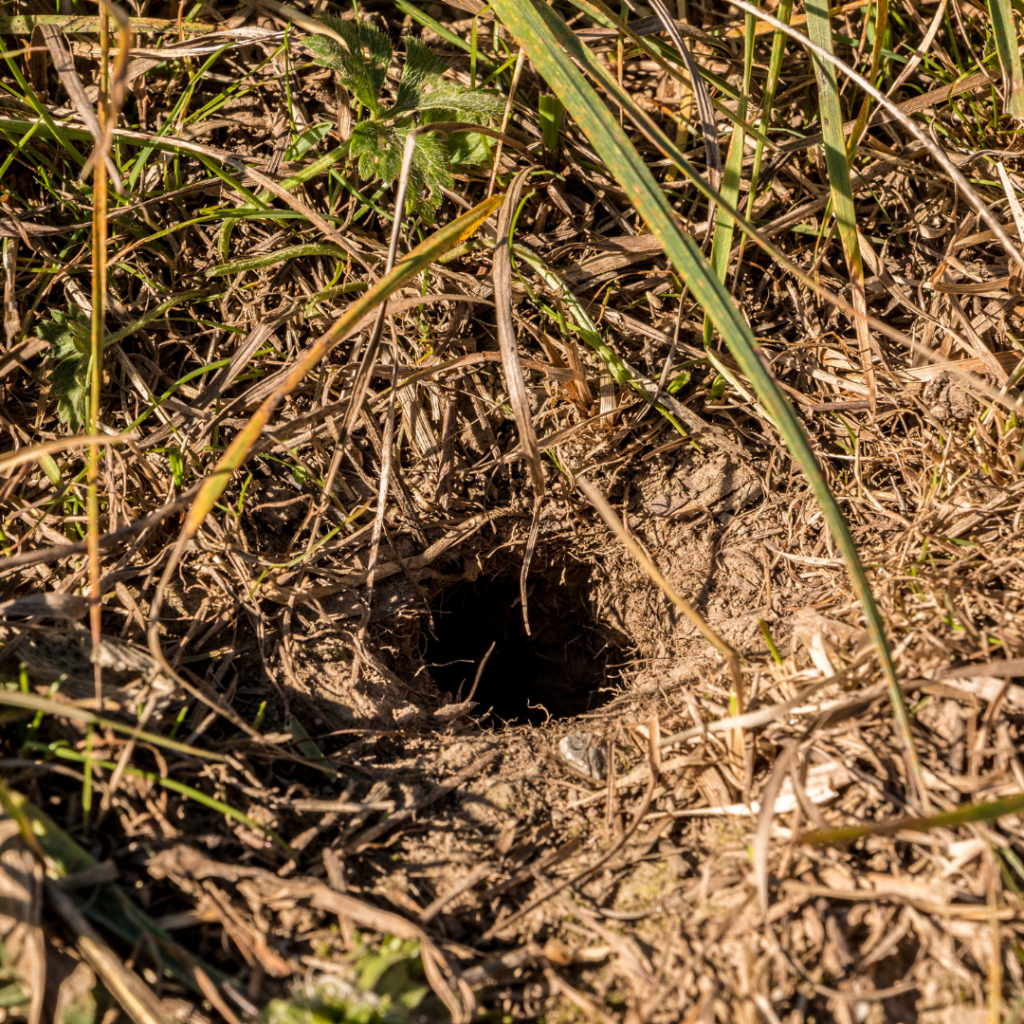
Habitat/Behavior
Chipmunks are active during the day and are most commonly seen outside their burrows in the mid-morning and mid-afternoon. They are decent climbers but prefer to forge for food and nest on the ground. As many already know they aren’t shy about sharing space in residential neighborhoods. But in the wild, they are found living in areas where oak trees are present as acorns are their favorite food. Many believe that they hibernate in the winter but they don’t store fat for winter so they need to wake up periodically to eat and find food. The state they are in during the winter is known as torpor or temporary hibernation. These rodents are known to be solitary for most of the year making them territorial when it comes to defending their burrows from other chipmunks unless it is mating season.

Reproduction
Chipmunks like squirrels also have 2 breeding seasons. Once in the early spring and again in the early to mid-summer. The female stays inside her burrow as the male chipmunks leave theirs in search of a female to mate with. The babies are born inside the female’s burrow. After 1.5- 2 months the female either leaves her babies to find a new burrow or blocks her babies from entering back into hers. This allows them to disperse at 2 months old. The pups become sexually mature at 10 months old.
Pregnancy Duration: 35 days
Baby Carrying: 2-5 pups
Number of litters (per year): 1-2
Groundhog/Woodchuck

Appearance
They have many names such as land beaver, marmot, and many more. They have thick double-layered waterproof fur. The fur color is brownish-red with white-tipped hairs. Similar to the rest of the rodent family they also have buck teeth that need to be consistently filed down otherwise they will be overgrown. As notorious diggers like their relative the chipmunk, they have hairy ears that block out dirt from entering inside. They also have a long tail to help them with climbing and swimming. The tail is a brownish-gray color and measures around 4-7 inches long.
Length (without tail): 16-20 inches
Weight: 2-4 kg (4.5-9 lbs.)
Lifespan: 3-10 years
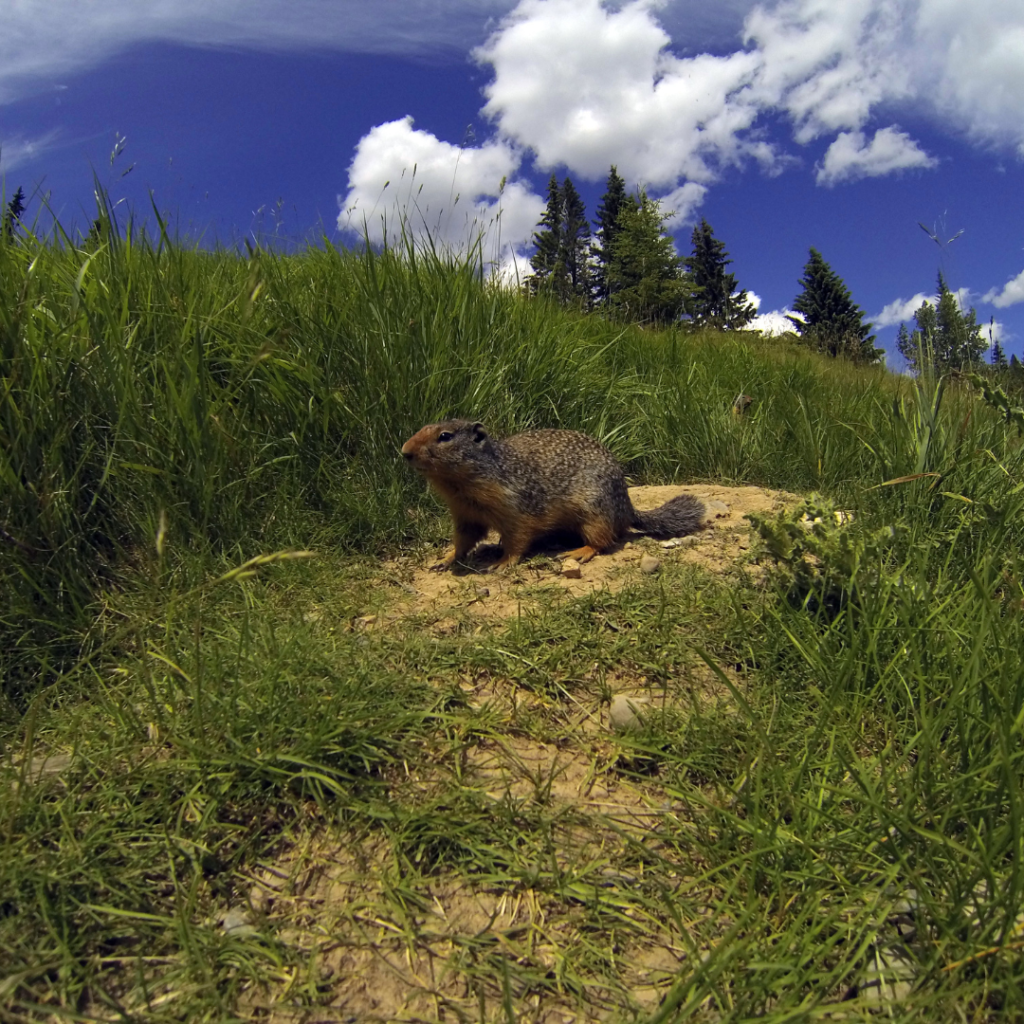
Habitat/Behavior
These rodents can be found all across Minnesota. This also includes residential areas. There they can quickly devour an entire garden in a short amount of time. They are herbivores eating mostly grasses and other vegetation, but occasionally they will eat insects and even baby birds. They are solitary animals in the wild and build underground burrows for the summer and winter. In the winter they are true hibernators and start hibernating in October regardless of what the temperature is outside. They usually wake between March and April.

Reproduction
Their mating season is between March to late April. The males are the first to wake up from hibernation and leave their burrows in search of a female to mate with. Once they find a female they both live in the burrow while the female is pregnant. After a month the male leaves the female as soon as the pups are born. It is very common to see the females outside of the burrow while the pups are inside. If you were to relocate a woodchuck springtime would be the best time to do so. The pups leave the nest after around 2 months and become sexually mature after 1 year.
Pregnancy duration: 31-32
Baby carrying: 2-6 pups
Number of litters (per year): 1
Plains Pocket Gopher
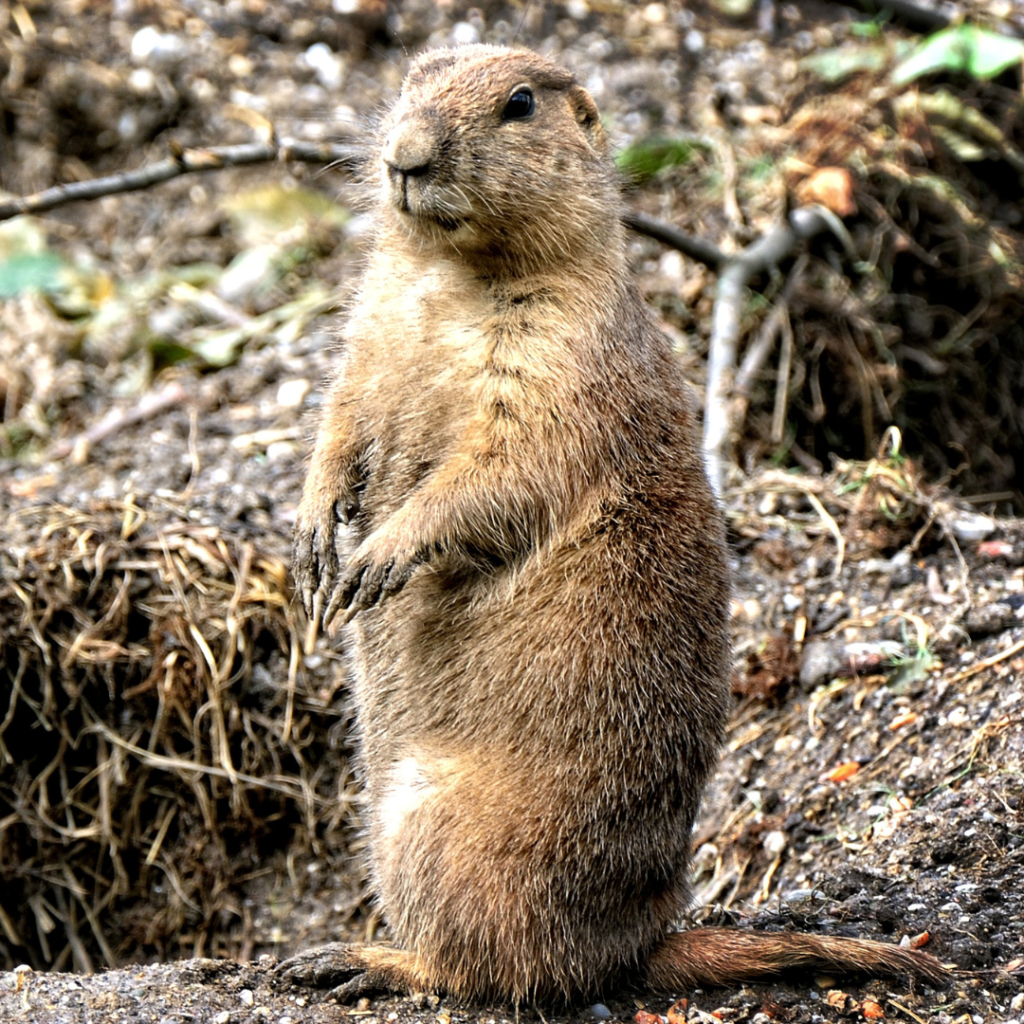
Appearance
This gopher has brown and black colored fur. The fur in the underbelly is a lighter brown or tan in coloration. They have small eyes and ears but large front claws that are perfect for digging. Their tail is mostly naked and measures around 2-4.3 inches. A unique feature that only gophers have is their external cheek pouches. The pouches can be turned inside out so they can be cleaned or groomed. They use these cheeks to carry large amounts of food. The cheeks can spread up to 2.8 inches wide and have a forward opening.
Length (without tail): 8.3-13.8 inches
Weight: 300-450 grams (0.6-1.0 lbs.)
Lifespan: 1-5 years

Habitat/Behavior
They prefer to live in deep sandy and silty soil. Or better known as friable soil. In the wild, they would be found in prairies, agricultural land, and urban areas building tunnels and eating plant roots, grasses, and tubers. But the plants and vegetation they eat are less important than the soil when finding a territory to live in. They are commonly active during two different times of the day. In the afternoon around 1:00-5:00 pm and at night from 10:00-6:00 am. They spend a little over 70% 0f their life inside their burrows only coming out to find food and mate. Most of the digging occurs in the fall and spring. But they are active all year round and do not hibernate. Most gophers live alone in their burrows unless they are breeding or females are carrying their young.
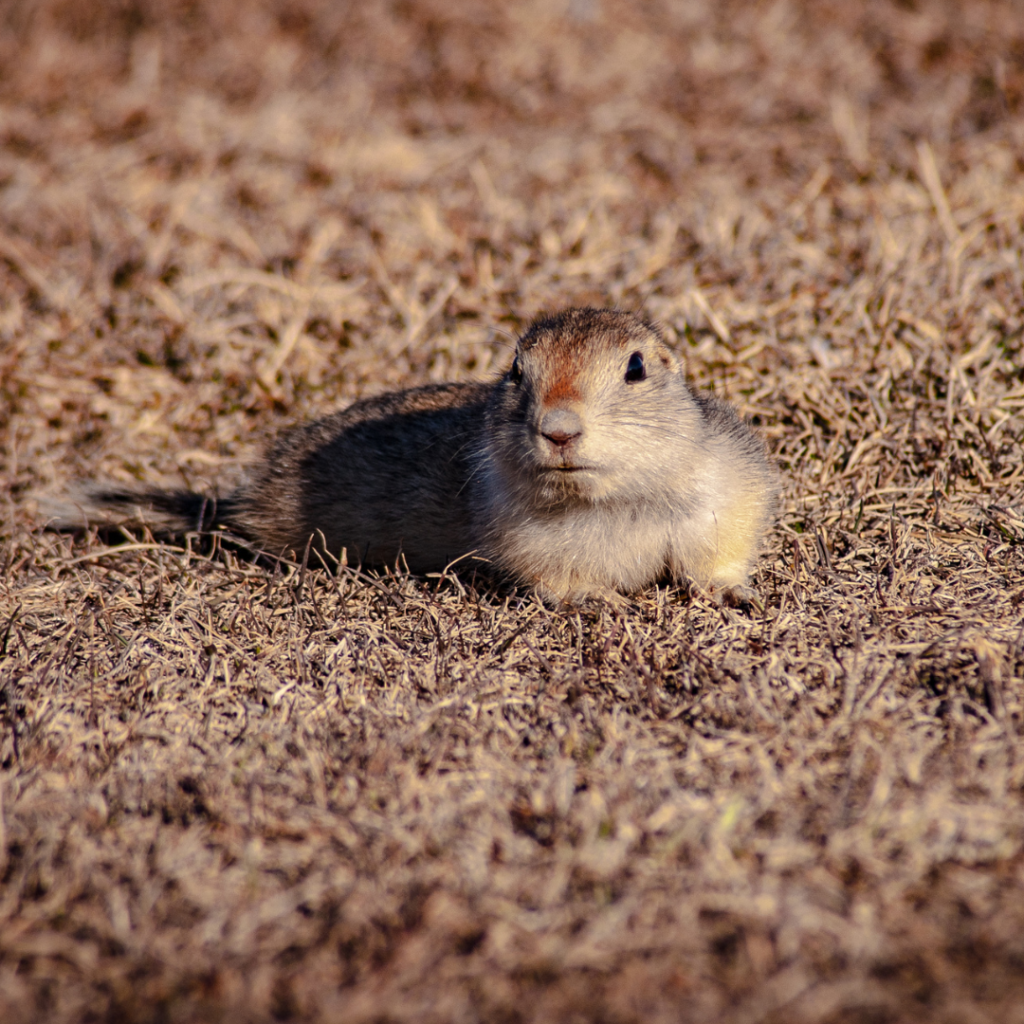
Reproduction
The breeding season in Minnesota goes from April to May. It is common for there to be 3-4 times as many females as males in an area and for this reason, it is common for males to mate with multiple females in one breeding season. In early spring the males will go searching for a female and enter inside her burrow to mate with her. Once the young are born they will stay in the burrow for 2 months. They become sexually active after 1 year.
Pregnancy duration: 50 days
Baby carrying: 1-3 pups
Number of litters (per year): 1
Common Muskrat
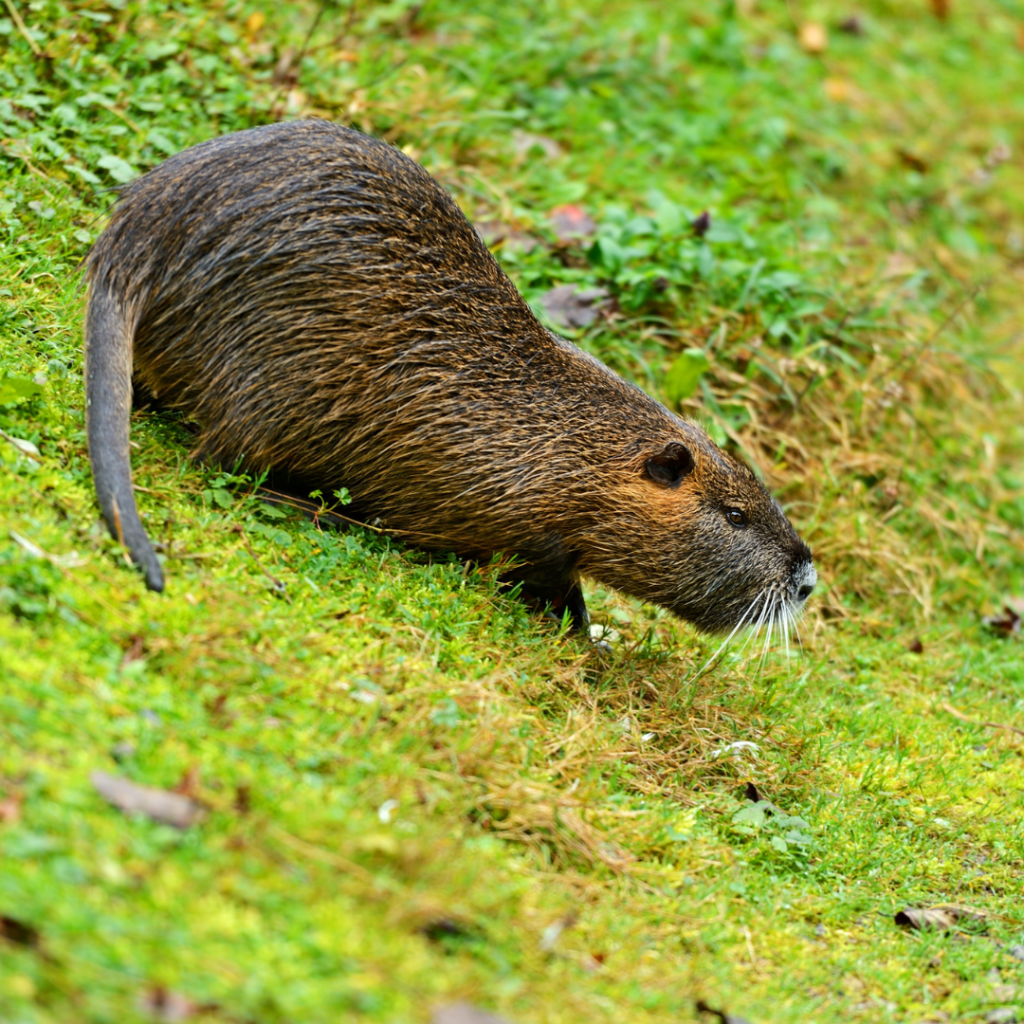
Appearance
Muskrats have dense brown fur that traps air inside to help with buoyancy and insulation. They have a long black furless tail (9.5 inches) that is used as a rudder to help them navigate when swimming. They also have short legs with large feet. Their back feet are webbed to help them swim.
Length (without tail): 12-12.5 inches
Weight: 680-1800 grams (1.5-4 lbs)
Lifespan: 3-4 years

Habitat/Behavior
Muskrats are excellent swimmers and spend all their time in or around the water. They are active all day but mostly around mid-afternoon before dusk. Their habitat consists of; bogs, wetlands, lakes, rivers, and swamps. They are social animals and live together in family groups. Unlike otters, muskrats are herbivores so they only eat plants. Some of the plants they consume are cattails, sedges, water lilies, and other water plants. They also do not hibernate but will stay inside their nests during extremely cold days eating stored-up food.
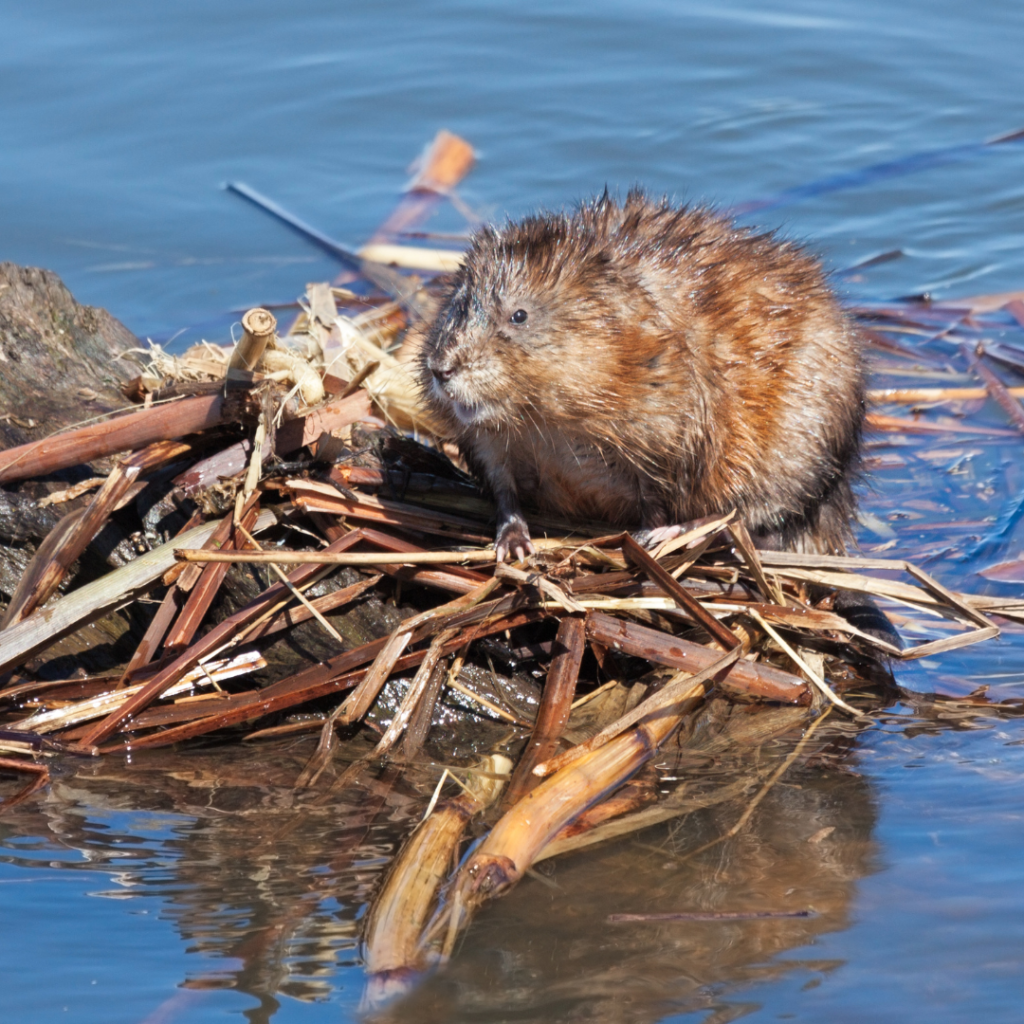
Reproduction
Their mating season lasts between March and August and the males and females both have multiple mates in one year. Males are especially aggressive during mating season as they need to compete for mating rights. Females give birth inside their dens where the babies will stay for 2-3 weeks. After leaving the den they become sexually active after 1 year.
Pregnancy duration: 3-4 weeks
Baby carrying: 5-10 kits
Number of litters (per year): 1-3
Learn more about what services we provide for voles, moles, and shrews
If you have any questions or concerns or would like to schedule an appointment call or send us an email
Call Us Today! 952-404-BOGO (2646)



